Table of Contents
Context: Recently, Thailand and Cambodia agreed to a ceasefire to curtail a century-old dispute over the 11th-century Preah Vihear Hindu temple.
About Preah Vihear Temple
- A Hindu temple located in the Dangrek Mountains (Northern Cambodia).
- Dedicated to Lord Shiva.
- Constructed during the Khmer Empire’s golden era (11th–12th century).
- Initially built by King Suryavarman I (1002–1050) and later expanded by Suryavarman II (1113–1150).
- Recognised as a UNESCO World Heritage Site.
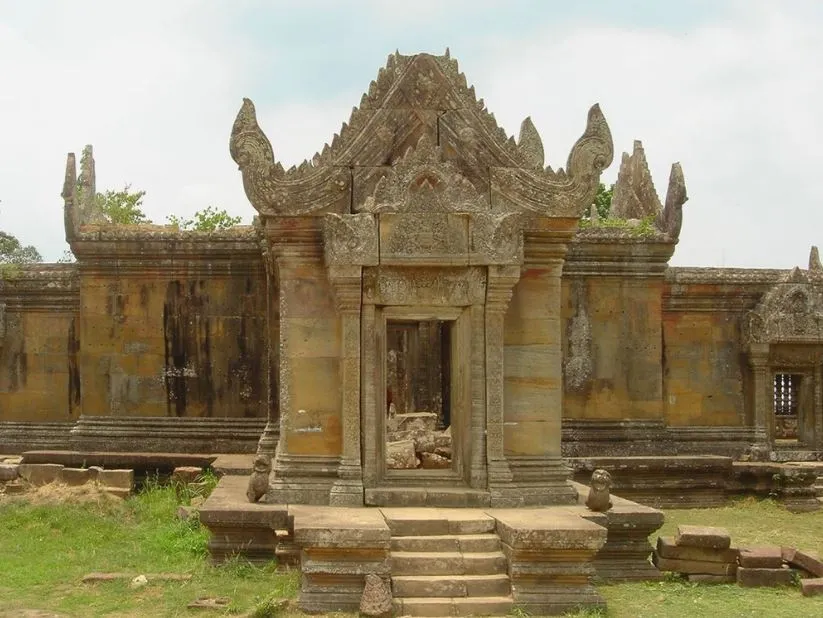
Architectural Features
- A prime example of classical Khmer temple architecture.
- Built along an 800-metre-long north–south axis with a series of sanctuaries.
- Comprises more than five gopuras (entrance towers), connected by long pavements and staircases.
- Unique for its multi-tiered platforms and gopuras connected by a central path.
- Some gopuras have stone roofs; others originally had wooden roofs, many now in ruins.
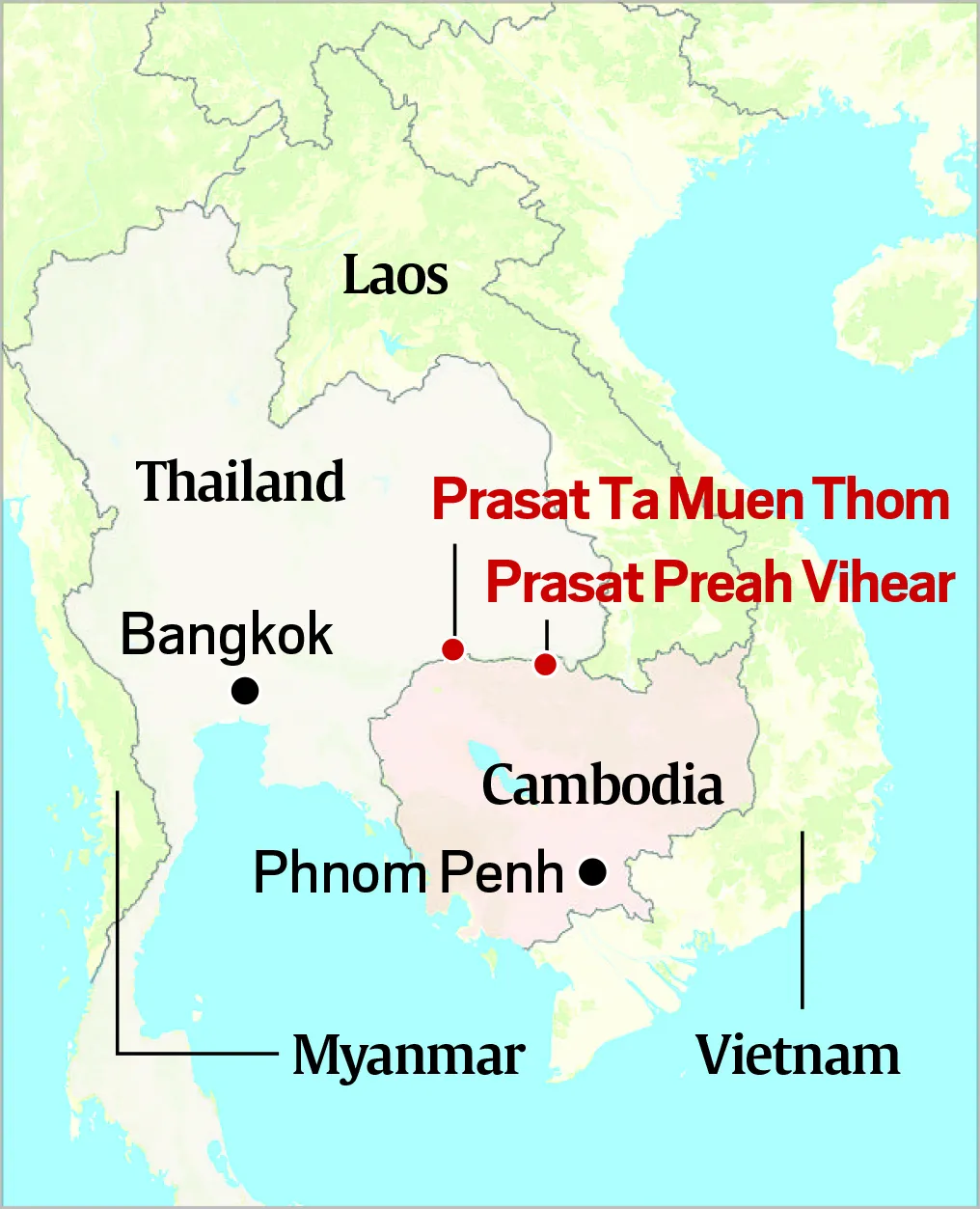
Prasat Ta Muen Thom
- A 12th-century ancient Khmer temple originally dedicated to Lord Shiva, later used for Buddhist purposes.
- Part of the Prasat Ta Muen group, which includes:
- Prasat Ta Muen Thom (Hindu temple)
- Prasat Ta Muen (Dharma Sala or rest house)
- Prasat Ta Muen Tot (Hospital Shrine)
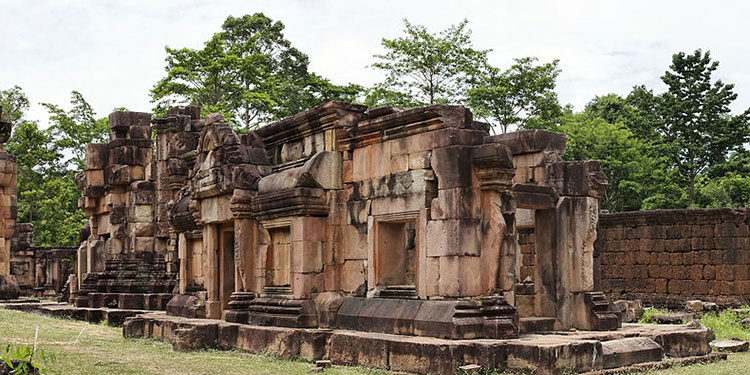
Constructed
- During the Khmer Empire under King Udayadityavarman II and was later expanded by King Jayavarman VII (13th century).
- Reflects Angkorian architecture and socio-religious life of the Khmer era (9th–15th century).
Architectural Features
- Prasat Ta Muen Thom:
- Made of sandstone, south-facing.
- Houses a Shiva Lingam with a water outlet and a surrounding cloister.
- Includes nearby laterite libraries and a pool.
- Prasat Ta Muen Tot:
- Functioned as a hospital shrine.
- Contains Khmer-Sanskrit inscriptions detailing medical appointments and public health services.
- Prasat Ta Muen (Dharma Sala): Likely served as a pilgrim’s rest house along religious and trade routes.

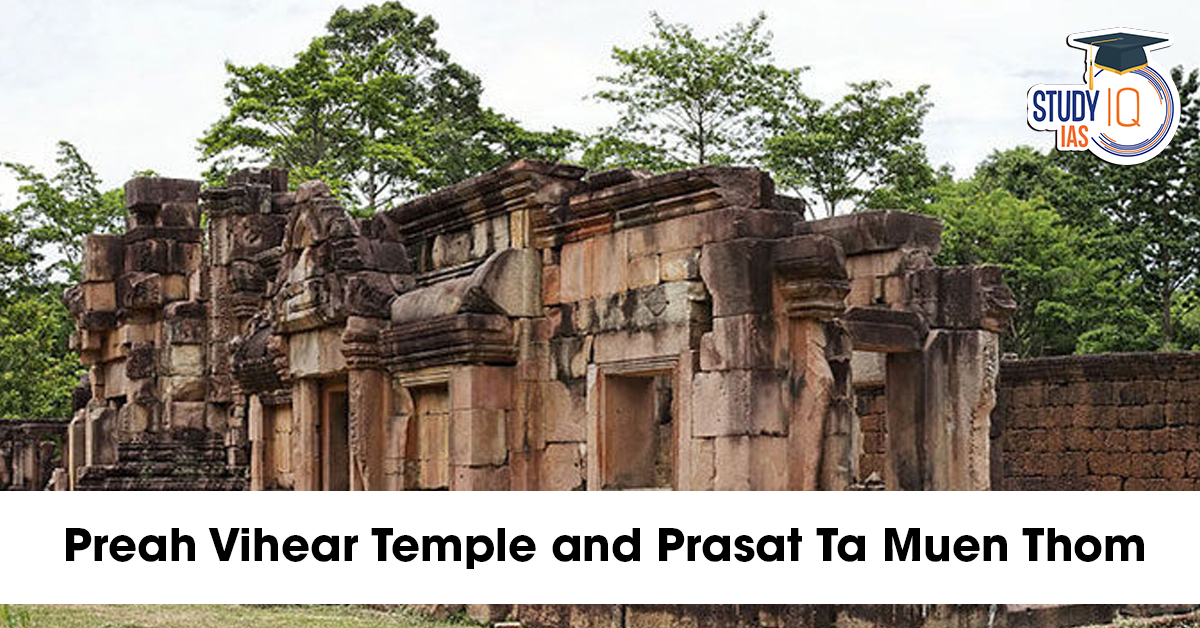
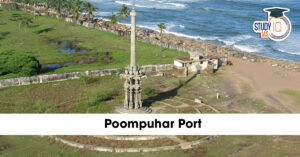 Poompuhar Port: Ancient Sangam-Era Marit...
Poompuhar Port: Ancient Sangam-Era Marit...
 UNESCO World Heritage Sites of India Lis...
UNESCO World Heritage Sites of India Lis...
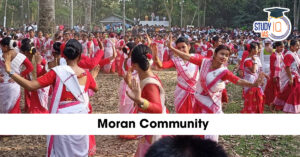 Moran Community of Assam, History, Langu...
Moran Community of Assam, History, Langu...

























